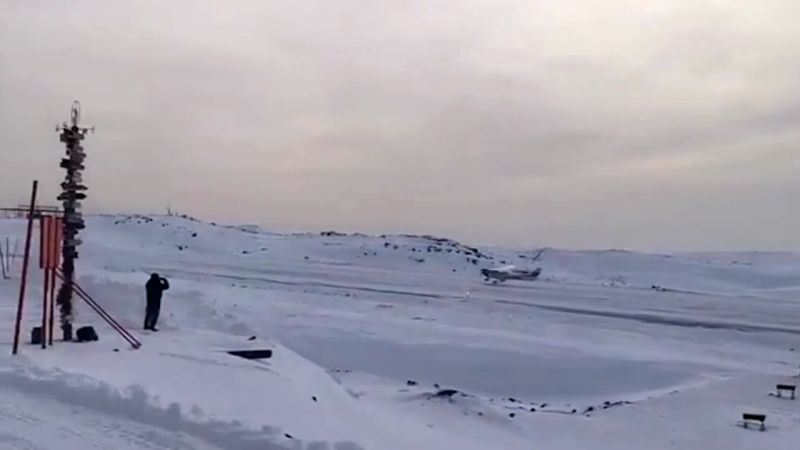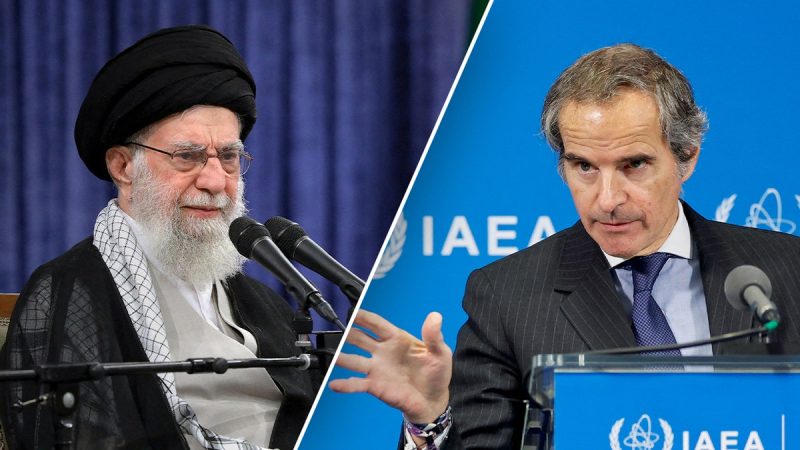Group Eleven Resources Corp. (TSXV: ZNG) (OTCQB: GRLVF) (FSE: 3GE) (‘Group Eleven’ or the ‘Company’) is pleased to announce the latest step-out drill results from the Zn-Pb-Ag horizon at its Ballywire discovery (‘Ballywire’) at the 100%-owned PG West Project (‘PG West’), Republic of Ireland. Drilling at Ballywire’s deeper, Cu-Ag target is in progress (to be reported in due course).
Highlights:
- 25-3552-35 (a 50m step-out to the NE from previous drilling, along the Zn-Pb-Ag horizon) intersected:
- 53.9m of 7.9% Zn+Pb (4.7% Zn and 3.2% Pb), 99 g/t Ag and 0.20% Cu, including
- 39.7m of 9.5% Zn+Pb (5.6% Zn and 3.9% Pb), 131 g/t Ag and 0.27% Cu, including
- 18.3m of 16.1% Zn+Pb (8.9% Zn and 7.2% Pb), 233 g/t Ag and 0.42% Cu, including
- 5.6m of 16.6% Zn+Pb (8.0% Zn and 8.5% Pb), 370 g/t Ag and 0.86% Cu
- True thickness is estimated to be 90-100% of the intervals noted above and below
- Three Cu-Ag enriched zones were also intersected below the above intercept in the same hole:
- 5.5m of 3.2% Zn+Pb (0.9% Zn and 2.2% Pb), 209 g/t Ag and 0.49% Cu, including
- 0.9m of 2.1% Zn+Pb (1.5% Zn and 0.6% Pb), 831 g/t Ag and 2.46% Cu and
- 0.9m of 195 g/t Ag and 0.21% Cu and
- 3.5m of 7.1% Zn+Pb (3.5% Zn and 3.6% Pb), 134 g/t Ag and 0.34% Cu, including
- 0.9m of 3.5% Zn+Pb (0.5% Zn and 3.0% Pb), 224 g/t Ag and 0.63% Cu
- These results extend the strike length of the immediate Ballywire discovery corridor from 1,250m to 1,300m, while demonstrating much thicker mineralization than previously encountered
- This corridor is hosted within a larger 2.6km long trend of robust mineralization pierced by drilling at Ballywire to date, along a prospective trend of over 6km (defined by four regional gravity-high anomalies, only one of which has been systematically drill tested to date)
- Today’s elevated Cu-Ag values further substantiate the Company’s ‘deeper Cu-Ag’ target (100-200m below the Zn-Pb-Ag horizon), currently being drill tested (second hole in progress)
- Three rigs are turning at Ballywire with over 4,000m of drilling completed year-to-date; Group Eleven aims to complete 8,000-10,000m in 2025 (fully funded)
‘Today’s hole represents our thickest intercept yet at the Ballywire discovery, surpassing our 29.6 metres of 10.6% Zn+Pb, 78 g/t Ag and 0.15% Cu announced in June 2024,’ stated Bart Jaworski, CEO. ‘Not only does this intercept extend strike and show exceptional mineralized thickness but also demonstrates zones of strong copper-silver values. This adds to growing evidence suggesting a deeper Cu-Ag horizon one to two hundred metres below the main Ballywire discovery horizon. This deeper target is currently being drilled, with one hole finished and a second started. We look forward to releasing these results as soon as assays are available. With three rigs turning each on excellent targets at Ballywire and a recently announced strengthened cash position of C$4.3 million, Group Eleven is poised to keep generating shareholder value through the drill bit for the foreseeable future.’
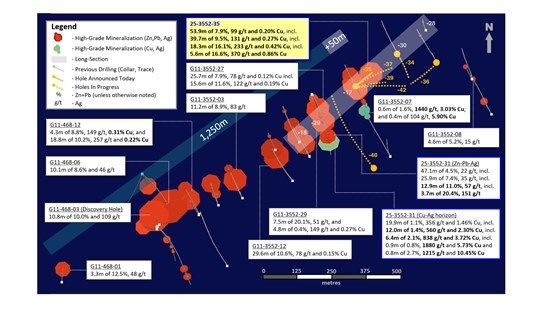
Exhibit 1. Plan Drill Hole Map of Ballywire Discovery, Showing Hole 25-3552-35
To view an enhanced version of this graphic, please visit:
https://images.newsfilecorp.com/files/5685/257506_7a4c0f28c4b01b45_002full.jpg
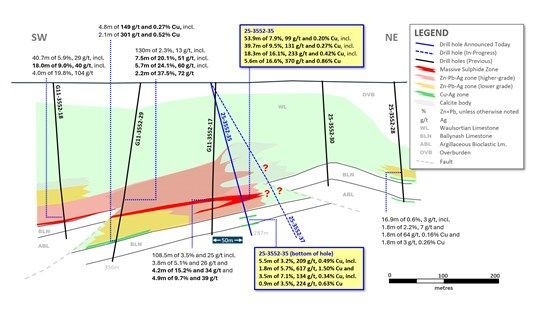
Exhibit 2. Long-Section of 25-3552-35 (50m Step-Out) at Ballywire
To view an enhanced version of this graphic, please visit:
https://images.newsfilecorp.com/files/5685/257506_7a4c0f28c4b01b45_003full.jpg
Note: Structural interpretation above is preliminary and subject to change with further drilling and compilation
Ballywire Drill Update
The Ballywire prospect at the Company’s 100%-owned PG West Project in Republic of Ireland, represents the most significant mineral discovery in Ireland in over a decade. First announced in Sept-2022, the discovery has 53 holes drilled and reported by Group Eleven to date, including the most recent hole (25-3552-35) reported today (see Exhibits 1 to 3).
Drilling at Ballywire continues with three rigs. Currently, eight (8) new holes are completed (and in the process of being logged, sampled and assayed). Six of these holes are shown in Exhibit 1, with two other holes near gravity-high anomaly ‘D’ (located 1.3km to the ENE). Recently strengthened financial position provides Group Eleven flexibility to either ramp-up drilling in 2025 and/or extend its runway for drilling well into 2026.
Assays from 25-3552-35 are summarized below (see Exhibit 3). Strong mineralization starts to occur within the Waulsortian Limestone at 120.6m downhole and continues intermittently until 187.9m, at which point, mineralization becomes more consistent through to near the base of the Waulsortian Limestone at 242.9m. Below the Waulsortian Limestone, several horizons of elevated copper-silver occur. Mineralization consists predominantly of sphalerite, galena and pyrite, with the copper-silver bearing zones also containing chalcopyrite and suspected tennantite-tetrahedrite.
Exhibit 3. Summary of Assays from 25-3552-35 at Ballywire
| Item |
From
(m) |
To
(m) |
Int
(m) |
Zn
(%) |
Pb
(%) |
Zn+Pb
(%) |
Ag
(g/t) |
Cu
(%) |
| 25-3552-35 |
120.58 |
121.49 |
0.91 |
10.85 |
2.90 |
13.75 |
235.0 |
0.03 |
| And |
148.67 |
149.62 |
0.95 |
16.90 |
4.05 |
20.95 |
69.6 |
0.02 |
| And |
155.22 |
156.15 |
0.93 |
6.16 |
0.67 |
6.83 |
18.5 |
0.01 |
| And |
163.74 |
177.63 |
13.89 |
3.61 |
0.57 |
4.17 |
9.4 |
0.00 |
| Incl. |
173.19 |
177.63 |
4.44 |
5.08 |
1.14 |
6.22 |
18.6 |
0.01 |
| Incl. |
174.98 |
175.91 |
0.93 |
10.20 |
2.72 |
12.92 |
47.1 |
0.02 |
| And |
187.88 |
241.82 |
53.94 |
4.72 |
3.18 |
7.89 |
99.3 |
0.20 |
| Incl. |
202.15 |
241.82 |
39.67 |
5.61 |
3.85 |
9.45 |
131.1 |
0.27 |
| Incl. |
212.55 |
230.81 |
18.26 |
8.89 |
7.18 |
16.06 |
233.1 |
0.42 |
| Incl. |
212.55 |
224.21 |
11.66 |
11.60 |
9.99 |
21.59 |
207.8 |
0.34 |
| Incl. |
221.33 |
226.96 |
5.63 |
8.03 |
8.54 |
16.57 |
370.0 |
0.86 |
| Incl. |
222.32 |
223.25 |
0.93 |
16.20 |
18.90 |
35.10 |
556.0 |
1.13 |
| And |
238.21 |
241.82 |
3.61 |
0.41 |
0.17 |
0.58 |
96.4 |
0.54 |
| Incl. |
240.92 |
241.82 |
0.90 |
0.82 |
0.55 |
1.37 |
223.0 |
1.27 |
| And |
252.32 |
257.80 |
5.48 |
0.94 |
2.22 |
3.16 |
208.8 |
0.49 |
| Incl. |
252.32 |
254.09 |
1.77 |
2.01 |
3.68 |
5.69 |
616.8 |
1.50 |
| Incl. |
252.32 |
253.20 |
0.88 |
1.48 |
0.63 |
2.11 |
831.0 |
2.46 |
| And |
263.23 |
264.15 |
0.92 |
0.01 |
0.08 |
0.09 |
195.0 |
0.21 |
| And |
268.70 |
272.15 |
3.45 |
3.50 |
3.55 |
7.06 |
133.7 |
0.34 |
| Incl. |
271.27 |
272.15 |
0.88 |
0.50 |
2.99 |
3.49 |
224.0 |
0.63 |
Note: True thickness of the mineralized interval in hole 25-3552-35, as a percentage of the down-hole interval, is estimated to be 90-100%
Notes to Exhibit 4: (a) Pallas Green MRE is owned by Glencore (see Glencore’s Resources and Reserves Report dated December 31, 2024); (b) Stonepark MRE: see the ‘NI 43-101 Independent Report on the Zinc-Lead Exploration Project at Stonepark, County Limerick, Ireland’, by Gordon, Kelly and van Lente, with an effective date of April 26, 2018, as found on SEDAR; and (c) the historic estimate at Denison was reported by Westland Exploration Limited in ‘Report on Prospecting Licence 464’ by Dermot Hughes dated May, 1988; the historic estimate at Gortdrum was reported in ‘The Geology and Genesis of the Gortdrum Cu-Ag-Hg Orebody’ by G.M. Steed dated 1986; and the historic estimate at Tullacondra was first reported by Munster Base Metals Ltd in ‘Report on Mallow Property’ by David Wilbur, dated December 1973; and later summarized in ‘Cu-Ag Mineralization at Tullacondra, Mallow, Co. Cork’ by Wilbur and Carter in 1986; the above three historic estimates have not been verified as current mineral resources; none of the key assumptions, parameters and methods used to prepare the historic estimates were reported and no resource categories were used; significant data compilation, re-drilling and data verification may be required by a Qualified Person before the historic estimates can be verified and upgraded to be compliant with current NI 43-101 standards; a Qualified Person has not done sufficient work to classify them as a current mineral resource and the Company is not treating the historic estimates as current mineral resources. ‘Rathdowney Trend’ is the south-westerly projection of the Rathdowney Trend, hosting the historic Lisheen and Galmoy mines.
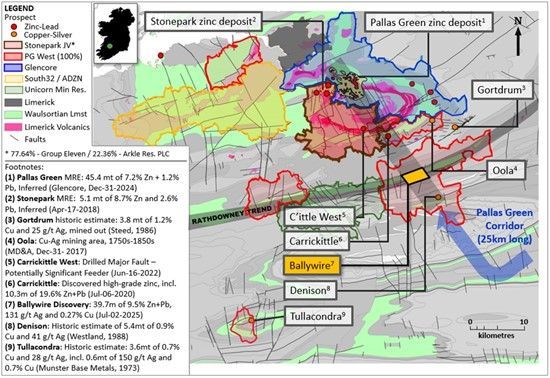
Exhibit 4. Regional Map of Ballywire Discovery
To view an enhanced version of this graphic, please visit:
https://images.newsfilecorp.com/files/5685/257506_gefig4.jpg
Qualified Person
Technical information in this news release has been approved by Professor Garth Earls, Eur Geol, P.Geo, FSEG, geological consultant at IGS (International Geoscience Services) Limited, and independent ‘Qualified Person’ as defined under Canadian National Instrument 43-101.
Sampling and Analytical Procedures
All core drilled at Ballywire is NQ (47.6mm) and is cut using a rock saw. Sample intervals vary between 0.55m to 1.32m with an average (over 188 samples) of 0.92m. The half-core samples are bagged, labelled and sealed at Group Eleven’s core store facility in Limerick, Ireland. Selected sample bags are examined by the Qualified Person. Transport is via an accredited courier service and/or by Group Eleven staff to ALS Laboratories in Loughrea Co. Galway, Ireland. Sample preparation at the ALS facility comprises fine crushing 70%
Quality Assurance/Quality Control (QA/QC) Information
Group Eleven inserts certified reference materials (‘CRMs’ or ‘Standards’) as well as blank material, to its sample stream as part of its industry-standard QA/QC programme. The QC results have been reviewed by the Qualified Person, who is satisfied that all the results are within acceptable parameters. The Qualified Person has validated the sampling and chain of custody protocols used by Group Eleven.
About Group Eleven Resources
Group Eleven Resources Corp. (TSX.V: ZNG; OTCQB: GRLVF and FRA: 3GE) is drilling the most significant mineral discovery in the Republic of Ireland in over a decade. The Company announced the Ballywire discovery in September 2022, demonstrating high grades of zinc, lead, silver, copper, germanium and locally, antimony. Key intercepts to date include:
- 10.8m of 10.0% Zn+Pb and 109 g/t Ag (G11-468-03)
- 10.1m of 8.6% Zn+Pb and 46 g/t Ag (G11-468-06)
- 10.5m of 14.7% Zn+Pb, 399 g/t Ag and 0.31% Cu (G11-468-12)
- 11.2m of 8.9% Zn+Pb and 83 g/t Ag (G11-3552-03)
- 29.6m of 10.6% Zn+Pb, 78 g/t Ag and 0.15% Cu (G11-3552-12) and
- 11.8m of 11.6% Zn+Pb, 48 g/t Ag (G11-3552-18)
- 15.6m of 11.6% Zn+Pb, 122 g/t Ag and 0.19% Cu (G11-3552-27)
- 12.0m of 1.4% Zn+Pb, 560 g/t Ag, 2.30% Cu and 0.17% Sb (25-3552-31), including
- 6.4m of 2.1% Zn+Pb, 838 g/t Ag, 3.72% Cu and 0.27% Sb (25-3552-31)
- 39.7m of 9.5% Zn+Pb, 131 g/t Ag and 0.27% Cu (25-3552-35)
Ballywire is located 20km from Company’s 77.64%-owned Stonepark zinc-lead deposit1, which itself is located adjacent to Glencore’s Pallas Green zinc-lead deposit2. The Company’s two largest shareholders are Michael Gentile (15.3%) and Glencore Canada Corp. (15.2% interest). Additional information about the Company is available at www.groupelevenresources.com.
ON BEHALF OF THE BOARD OF DIRECTORS
Bart Jaworski, P.Geo.
Chief Executive Officer
E: b.jaworski@groupelevenresources.com | T: +353-85-833-2463
E: j.webb@groupelevenresources.com | T: 604-644-9514
Neither TSX Venture Exchange nor its Regulation Services Provider (as that term is defined in the policies of the TSX Venture Exchange) accepts responsibility for the adequacy or accuracy of this release.
Cautionary Note Regarding Forward-Looking Information
Technical and scientific information disclosed from neighbouring properties does not necessarily apply to the current project or property being disclosed. This press release contains forward-looking statements within the meaning of applicable securities legislation. Such statements include, without limitation, statements regarding the future results of operations, performance and achievements of the Company, including the timing, content, cost and results of proposed work programs, the discovery and delineation of mineral deposits/resources/ reserves and geological interpretations. Although the Company believes that such statements are reasonable, it can give no assurance that such expectations will prove to be correct. Forward-looking statements are typically identified by words such as: believe, expect, anticipate, intend, estimate, postulate and similar expressions, or are those, which, by their nature, refer to future events. The Company cautions investors that any forward-looking statements by the Company are not guarantees of future results or performance, and that actual results may differ materially from those in forward looking statements as a result of various factors, including, but not limited to, variations in the nature, quality and quantity of any mineral deposits that may be located. All of the Company’s public disclosure filings may be accessed via www.sedarplus.ca and readers are urged to review these materials, including the technical reports filed with respect to the Company’s mineral properties.
1 Stonepark MRE is 5.1 million tonnes of 11.3% Zn+Pb (8.7% Zn and 2.6% Pb), Inferred (Apr-17-2018)
2 Pallas Green MRE is 45.4 million tonnes of 8.4% Zn+Pb (7.2% Zn + 1.2% Pb), Inferred (Glencore, Dec-31-2024)

To view the source version of this press release, please visit https://www.newsfilecorp.com/release/257506












